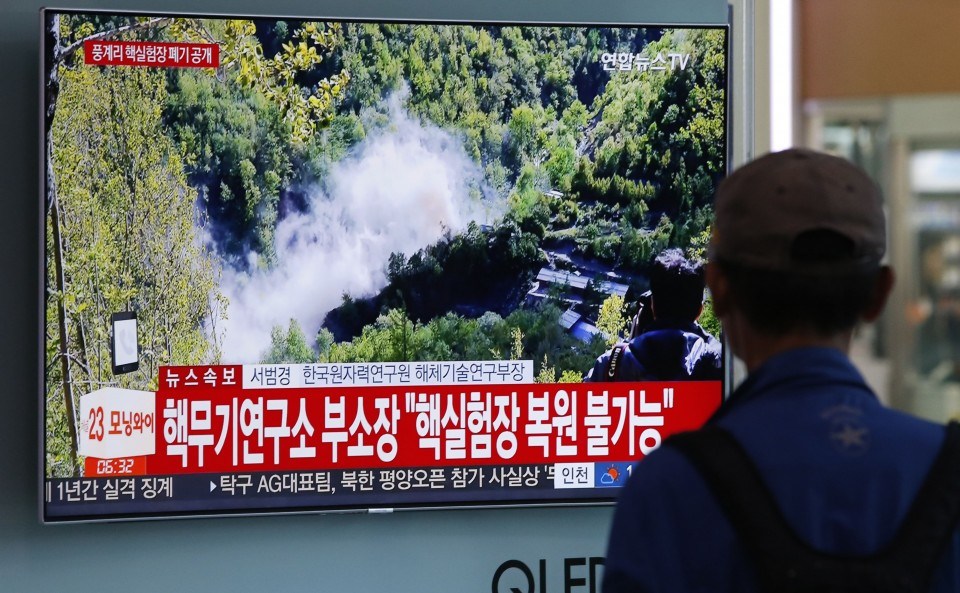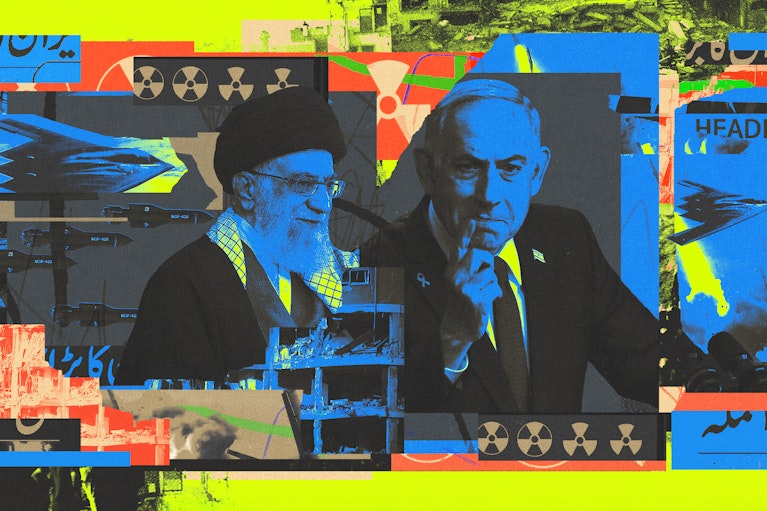Siegfried Hecker is a nuclear scientist who was the director of the Los Alamos National Laboratory from 1986 to 1997.
STANFORD, Calif. — When President Trump abruptly canceled the summit with North Korea last week, it overshadowed the closing of North Korea’s nuclear test site just a few hours before. Although it is not irreversible, blowing up the site’s tunnels, sealing the entrances and removing test site facilities and equipment was nevertheless a serious step toward denuclearization. What possessed North Korean leader Kim Jong Un to take this step now?
For one, Pyongyang may have been influenced by the Trump administration’s harsh rhetoric that it required concrete steps to denuclearization, and it wanted them early on.
Another likely reason is that such a move will greatly benefit North Korea’s relationship with China, which had reached a low point in recent years. My Chinese colleagues have explained that North Korea’s nuclear program poses a number of serious risks for China. The greatest concern is that its expansion will bring U.S. military intervention and greatly set back any hopes for peace and stability in the broader region. North Korea’s expanding missile program has already brought the unwanted presence of U.S. ballistic missile defenses to South Korea. China claims the U.S. anti-ballistic missile defense system, Terminal High Altitude Area Defense (THAAD) system, deployed so close to its borders threatens the viability of its own missiles that are aimed to deter the United States.
However, by far the most emotionally charged objection to North Korea’s nuclear program is the potential of nuclear accidents, especially the threat of radioactive contamination from the Punggye-ri nuclear test site blanketing China’s neighboring Jilin province, around 60 miles from the nuclear test site. Residents fear radiation leaking across the border and have reported that they are particularly concerned because they do not get reliable information from the Chinese government.
The Jilin Daily published a full-page article explaining how Chinese citizens can protect themselves in the event of a nuclear weapons detonation. The influential Chinese state-backed Global Times, meanwhile, published an article that stated: “If war breaks out, it is not possible to rule out the Korean Peninsula producing nuclear contaminants, and countermeasures must be seriously researched and spoken openly about to let the common folk know. But at the same time, there is absolutely no reason to be alarmed.” That doesn’t seem to be an effective way of not alarming the public.
All of this may have prompted Chinese President Xi Jinping to put these concerns near the top of the list of issues he discussed with Kim during his two visits this spring. It is quite conceivable that Xi encouraged Kim to permanently close the test site to stop the danger — or even just the nerve-wracking perceived threat — of radiation, and to do so as quickly as possible. Pyongyang is clearly sensitive to these issues, no doubt reacting to Chinese concerns, because it has repeatedly stressed the fact that its nuclear tests were carried out in a safe manner. Even the announcement of the tunnel destruction stated: “It has been confirmed that there were neither leakage of radioactive materials nor any adverse impact on the ecological environment.”
Some analysts have criticized North Korea’s decision to disinvite technical experts to the test site closure. They lament the loss of nuclear weapons information that could have been gained from a closer examination of the tunnel interiors before they were collapsed. It would have been a good trust-building measure for North Korea to give outside technical experts access to verify the degree of demolition, but what is most important is that the test site is destroyed.
Some called it a public relations stunt, much like the demolition of North Korea’s Yongbyon reactor’s cooling tower in 2008. Such a comparison is not appropriate. The loss of the test site is a much greater one for North Korea than the cooling tower and would take much more time and money to reestablish.
By closing the nuclear test site, Pyongyang took a step considerably beyond a nuclear testing moratorium. Although North Korea could surely excavate and prepare new tunnels, having to start over or complete an existing tunnel complex for testing would cost time and money. North Korea has successfully contained its nuclear tests deep in the mountains at Punggye-ri, which indicates a suitable geologic site, meticulous tunnel design and construction, and strong containment practices. It would need the same for any new site. Moreover, dismantlement of the test site will be reinforced through other interlocking political, economic and security measures that will make breaking out of the agreement very costly for Pyongyang.
Although Kim Jong Un has said that the state’s nuclear force is complete, I believe that North Korea does not yet have sufficient missile or nuclear test experience to reach the U.S. mainland with a nuclear-tipped missile. More nuclear and intercontinental ballistic missile (ICBM) tests are required. Moreover, for North Korea to increase the sophistication, safety and diversity of its nuclear arsenal, more nuclear testing is required. North Korea has claimed to be developing nuclear warheads for submarine-launched ballistic missiles and hinted at an interest in tactical nuclear weapons and electromagnetic pulse weapons but adding those to its nuclear arsenal requires additional tests. All of these various tests will now not take place, at least not in the immediate future.
Some have suggested that the September 3 test last year left the test site unusable, so it was no big concession. It appears that the large explosion did damage the test tunnel in which it was carried out, but there is evidence that two other tunnels in the same complex could still support future tests. That is also Pyongyang’s official claim.
Whatever the real reason for Kim’s decision to destroy the test site, it is a serious step in what will have to be a phased “halt, roll back and eliminate” process toward denuclearization. It represents one of the roll-back steps. The next steps, which most likely will have to wait until the summit meeting, if that ever occurs, are to have North Korea halt and then decommission its plutonium production reactor, agree not to start up the light water reactor that’s currently under construction and agree to halt its uranium enrichment facilities. Finally, a pledge not to export nuclear weapons, materials or technologies is necessary to round out the most important initial actions.
This was produced by The WorldPost, a partnership of the Berggruen Institute and The Washington Post.





